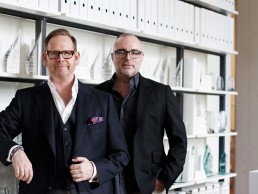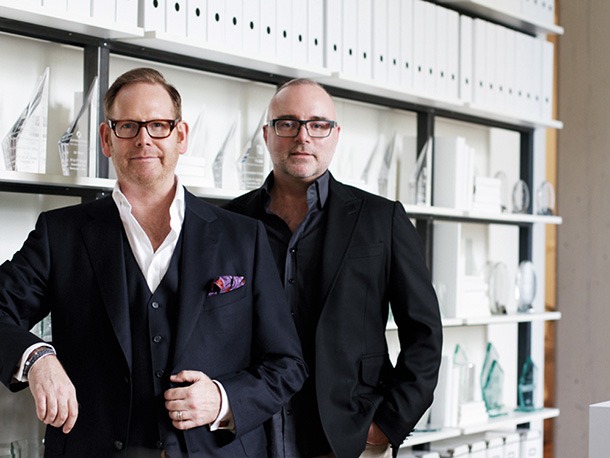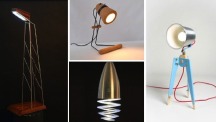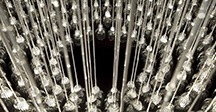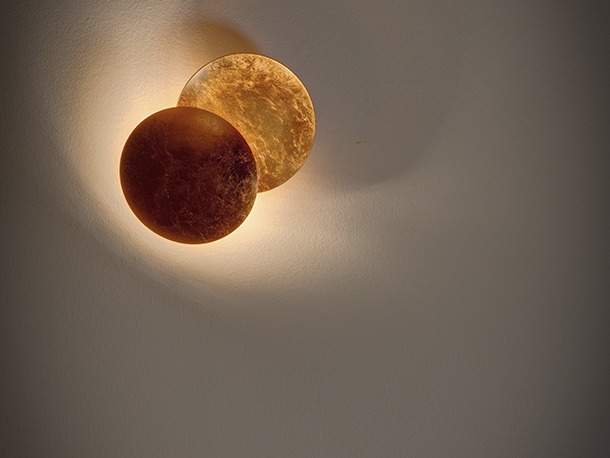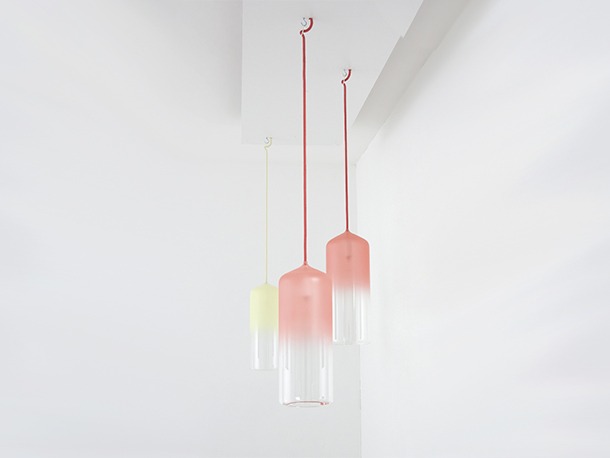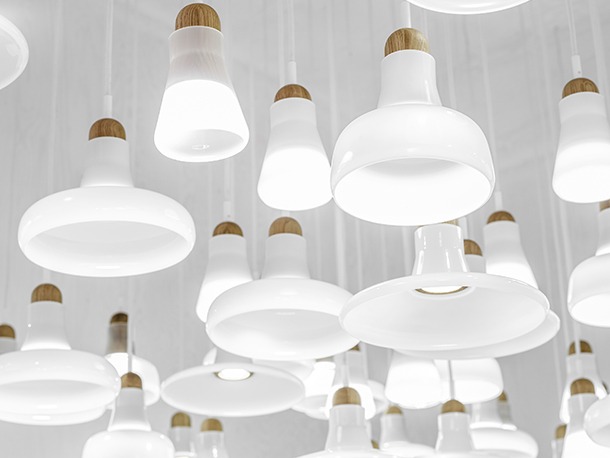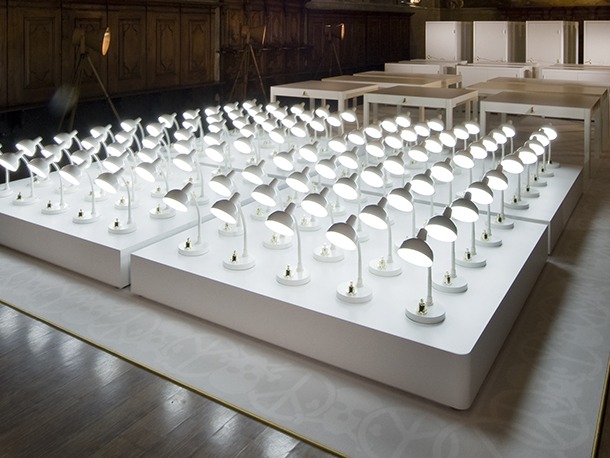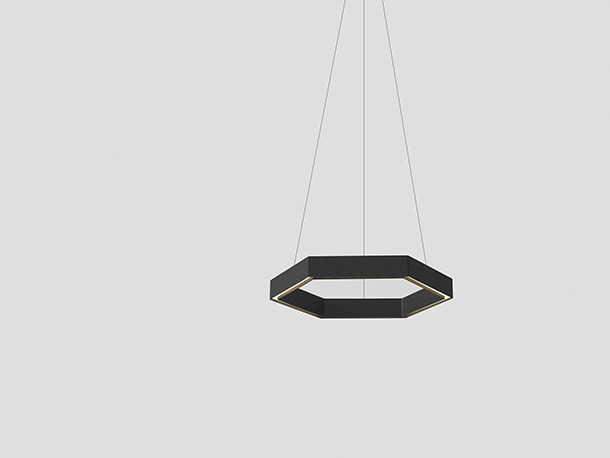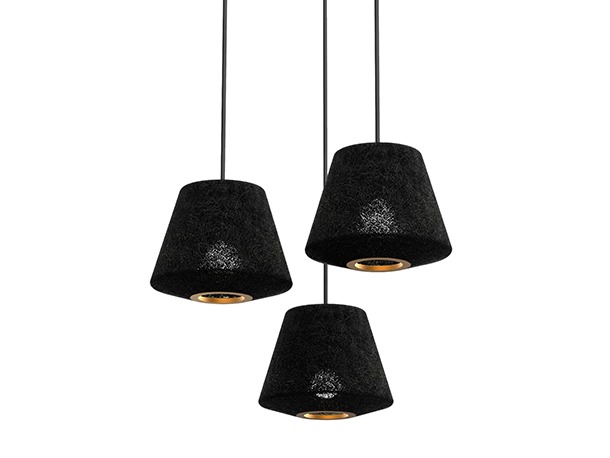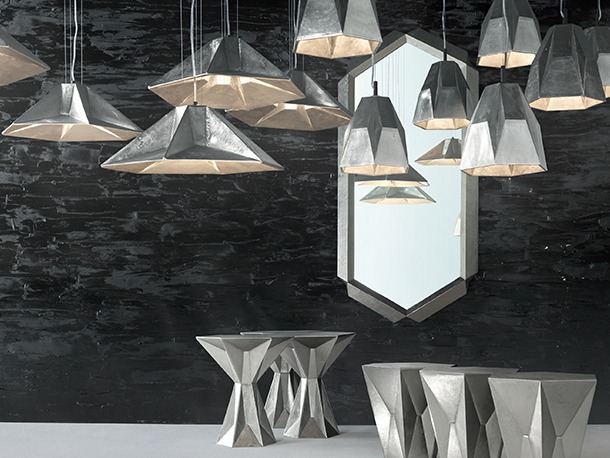A New Age of Glass
Traditional glass blowing regions in Europe developed where there was an availability of Silica sand (the main constituent of glass) and access to fuel to run large-scale furnaces. A proliferation of traditional factories can be found in Eastern Europe, in an area formerly known as Bohemia (now mainly the Czech Republic, but including parts of bordering Hungary, Poland, and Germany), where wood was plentiful to fuel the furnaces. These factories were known for their clear crystal and faceted cutting patterns, which refracts light. Opulent pieces in intense colours with gold decorative details are also characteristic of these regions. Contemporary production is now centred around Novy Bor in central Czech Republic.
Italian blown glass from Murano near Venice is characterised by colourful, highly textured and patterned work, with baroque forms and rich use of colour. This island was a sanctuary for the production of glass and containment of industrial secrets. A rich patrimony of skill was handed down from one generation to the next ensuring a solid cultural identity on which it still trades.
The Alsace area of North Eastern France was home to Emille Gallé and René Lalique who drew on local resources to create iconic glass objects in the art nouveau style. Lalique is one of the only remaining large factories still in production in this area, employing local, skilled workers.
Traditionally, Scandinavian factories also supported particular designers, including Nuutajärvi and Hämeenlinna in southern Finland, Homlegard in Denmark, and Orrefors in Smaaland in Southern Sweden. Across Scandinavia, simple lines, sparse use of colour and an exploration of the liquidity of the material prevailed.
Crystal manufacturers in Ireland and Britain were heavily influenced by the Bohemian tradition, maximising the optical quality of clear lead crystal that produces a highly reflective and refractive surface.
Today the majority of traditional glass factories are struggling to survive. The production of hot glass is expensive due to high energy costs and because making glass by hand is so labour intensive. It is also physically demanding work undertaken in extreme heat and requiring intense concentration. Glass making is a community activity. It requires a team to work in synchronicity to bring each individual piece to fruition. The savoir-faire of each glassmaker is something that can be taught but takes many years of practice to perfect. Traditionally this was done through the apprenticeship system and most young men started at age sixteen, many of them following their fathers into the local factory. Creating a team that works seamlessly and without incident, where coordinated movements of hand and eye control the molten liquid sufficiently and expertly to produce similar results of high quality, takes years of training.
Many factories are still trading on the legacy of their history, and producing traditional products that increasingly have little context for contemporary living. Many of these products are connected to regional rituals, patterns of behaviour and symbols of wealth. High costs of research and development, means that struggling factories are not investing in developing new ideas that are connected to current rituals and changing cultural values. This is stunting the growth of new markets and new products including lighting. With a more open access to communication, inspiration is constantly moving across national borders, resulting in less diversity in cultures and ideas. This pattern of patrimony and tacit knowledge of this process-led community is coming to an end. The existence of large glass producing factories is in decline. With its end, intangible qualities of a community’s capabilities, potentialities, and social relationships, will disappear.
Despite this trend, the exceptional qualities of glass hold enormous potential as a modern, relevant design material. Glass records a memory of its journey, from its molten state to its cooled solid form. The blowing process is a series of steps that stretch, contain and restrain the fluid material. The innate qualities of glass are liquidity, refraction, reflection, magnification, distortion, and absorption of light. It can also contain air, which can be controlled and used to create remarkable patterns that refract light, such as the Reticello technique popular in Italian styles. Glass can be opaque transparent or translucent. It can contain texture and colour within the body of the material or on its surfaces. A spectrum of colour can be controlled to create patterns, resulting in the bending, containing or directing of light. Much of this work can only be achieved by hand and possibilities for exploiting these characteristics are infinite. By collaborating with field experts, creating exciting lighting solutions, which avail of these qualities, is possible. The essential ingredients for collaborative success, are communication, patience, time and financial investment. Product designers can hold the key to advancing ideas on new products that are relevant to contemporary living. Finding suitable affordable solutions to product development and exploration with field experts remains a difficult stumbling block. All too often, a misunderstanding of the material, and a limited knowledge of production methods and timescale needed to evolve new ideas, prevents designers from attempting innovative ideas with skilled glassblowing teams. A lack of financial investment mean that many projects never evolve beyond initial drawings.
A number of glass centres have evolved where residencies and research projects are supported and investigated. CIAVmeisenthal in France, for example, has supported a number of recent lighting projects. Residencies in places such as Pilchuck glass school, USA, Canberra glassworks arts centre in Australia and Nuutajaravi glass centre in Finland are offered each year. However many of these residencies are availed of by artists wishing to pursue creative exploration of personal work rather than items for commercial production. Glass departments of art and design schools encourage collaboration with established designers and emerging designers. Prototyping can often evolve more easily in these environments. Specific initiatives such as the recent European network ‘Glass is Tomorrow’ can also contribute to be a catalyst in this regard, bringing together designers and makers in traditional glass centres to explore and share ideas on evolving new products.
Significant financial investment, which allows creative exploration for the production of glass objects including lighting, can lead to developing successful commercial answers to a contemporary lifestyle and ensure the future of traditional glass manufacturing.
Róisín de Buitléar is an artist and educator, based in Dublin, Ireland.
CAUTION! Fragile, a collaborative exhibition of glass by de Buitléar with master craftsmen from Waterford, will be shown at the Museum Of Glass in Tacoma, USA, from 9th November 2013 to 30th September 2014.
folio: II BY IV Design
II BY IV Design was founded in 1990 by partners Dan Menchions and Keith Rushbrook. Their shared passion for creating design solutions that are both innovative and functional has seen the firm constantly expand, drawing in a talented team from a variety of design backgrounds. Continually traveling the globe, the team finds inspiration in art, fashion, food and culture, which keeps II BY IV Design in touch with current and emerging consumer lifestyles and attitudes.
The practice’s varied portfolio includes projects in a wide range of fields: hotel, retail, hospitality, residential, exhibition, office and bespoke design.
A clear understanding of good lighting design, both architectural and decorative, is a key element in the creation of high end, often high profile projects. In many cases, lighting pieces are custom made to II BY IV Design’s specifications, providing the perfect focal point to complete a scheme. Based out of Toronto, the firm has just launched its first international studio in New York.
Beer Boutique
Toronto, Canada
A celebration of traditional craftsmanship, the Beer Boutique caters to local gourmet tastes for artisan beers, lagers and stouts as well as classic brews. Bottles are showcased in curved Beer Theatre displays, which soften the industrial-inspired space.
Drawing upon the neighbourhood’s history of manufacturing, II BY IV Design chose interior finishes of reclaimed wood, exposed brick and copper to evoke a sense of being within a brewery. The heritage atmosphere is further enhanced with herringbone plank floors and an exposed ceiling that emphasises a striking custom chandelier of copper pipes linked by LED tubes. Reminiscent of the piping that connects copper stills, this centerpiece, manufactured by Visio, juxtaposes the traditional and modern to great effect.
This prototype design is set to be rolled out to stores nationwide.
RW&Co
Canada (Nationwide)
Inspired by modern glamour and high-energy contemporary fashion, II BY IV Design’s concept for RW&CO’s flagship store in Toronto has become the template for outlets across the country. The store’s structure, a series of planar surfaces and sliced geometric shapes, is tempered by the shimmer of chrome and diamond, from the glowing studs on the store façade to the three-piece chandelier within. The latter is part of the GIA Light series of fixtures developed by II BY IV Design. Long rectangular, polished chrome frames are strung with crystals and suspended from the ceiling by aircraft cable.
The GIA has been used in a number of the practice’s projects, evolving into different shapes and styles to suit different settings. The most recent example of this is in the new Trump International Hotel and Tower in Toronto, where circular versions adorn the lobby areas for both hotel and residential suites.
Donato Salon + Spa
Toronto, Canada
With a dramatic colour palate of dark ebony and ivory, the Donato Salon + Spa concept seamlessly melds classic design elements within a contemporary context. The client’s objective was the creation of a new flagship location that would strengthen their already-established brand, attract new clients and maximise sales of their new cosmetic line.
Avoiding unwanted shadows and ensuring accurate colour rendering were key considerations for the salon areas, but so too was visual impact. Each zone has its own distinct character, including the entrance space, which was styled to mimic the experience of visiting a luxurious hotel. Two chandeliers, custom designs by II BY IV Design and produced by Eurolite in Toronto, hang above a custom designed counter, reminiscent of a hotel concierge desk, welcoming guests into the space.
Chairman’s Suites
Toronto, Canada
Design decisions for the Chairman’s Suites, a high-end private members club located within the Air Canada Centre sports arena, were focused on providing a unique upscale venue in which to enjoy the game and entertain.
Rosewood tables, cognac-coloured leather upholstery and polished bronze chairs give the space an opulent finish. Keying in to this aesthetic, custom light fixtures were created, manufactured by Lighting Nelson & Garrett following II by IV Design’s specifications. A series of polished bronze fins radiate in a circular array around a central light source - MR16 up- and downlights set within a frosted acrylic diffuser. The piece is present in two styles: a shallower fixture located above the semi-circular dining booths and a taller version in the bar area.
SnAKS
New York, USA
The design of the new tartinerie in Saks Fifth Avenue’s flagship Rockefeller Center location balances timeless glamour, New York verve and a charming freshness. The clean lines, sparing details, modern classic furnishings and pale lavender and cream palette are at once lady-like, sexy and fashionable. The multipurpose space provides shoppers with a location to lunch, as well as an additional space for Saks to host shows and launch events.
A row of Zebra pendants from Viso (designed by Filipe Lisboa) hang above the counter, their silver metallic stripes designed to evoke a spectacular idealism and sophistication. “We liked the simplicity of the design and reflective nature of the material,” notes II BY IV Design’s Keith Rushbrook. “At night the light creates beautiful shadows.”
Delight in Light
Hundreds of new designs will compete in the Delight in Light National Young Designer Competition, staged for the first time at 100% Design in collaboration with the Lighting Industry Association. All four corners of 100% Design will be illuminated by the UK’s brightest lighting designers as they showcase their ideas.
Among the judges is Simon Terry, Innovation & Brand Director at Anglepoise. “Having been a judge for the awards for a number of years, it is fantastic to be working with an organisation like 100% Design," he says. "Finally these budding young designers will be getting an international platform that can propel them into the media limelight, and a fast track into a sustainable design career.
Established in 1985 the Lighting Industry Association Awards have become the premier competition for lighting design students in the UK. ‘Delight in Light’ is a new movement created to encourage excellence in lighting design. As part of the competition brief, designers are asked to create a product that might withstand being interrogated by a real-world, cross-functional team on its route to market.
The benefits of this are obvious to those at both ends of the design spectrum. For the lighting industry, it helps create talent that strives for excellence and the high quality design can provide. For the designers themselves, the provides an opportunity to liaise more closely with the industry and gain exposure at high-profile events.
The winner will be announced at 100% Design.
Sharon Marston at Buckingham Palace show
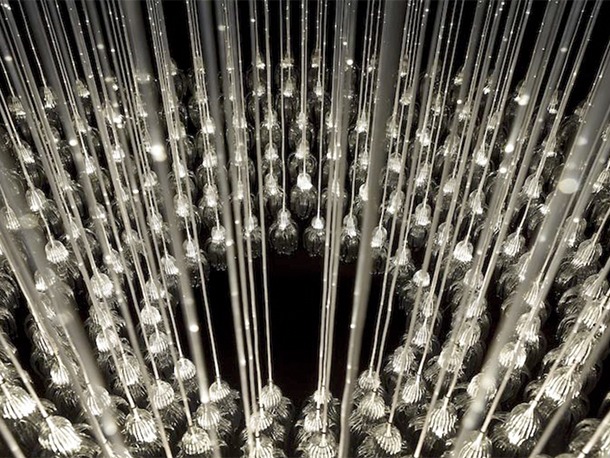
A handcrafted chandelier by UK lighting designer Sharon Marston will illuminate the stand of British jeweller Mappin & Webb at July’s Coronation Festival, 11-14 July 2013. The festival is a one-off summer event sees the gardens of Buckingham Palace transformed into an high-class forum for exhibitors showcasing their skills and expertise across four main sectors, homes & gardens; food & drink; design & technology and style; pursuits & past times.
The suspended Cluster chandelier from Sharon Marston’s current collection will capture and reflect the glamour and luxury surrounding the Mappin & Webb brand. Similarly, it will provide a glimpse into the design aesthetic of the jewellers’ new flagship stores for which Sharon Marston chandeliers have been specified.
Says Marston: “Cluster presents an exaggerated variant of the more linear Lotus light from my collection. Rings of fading dusk grey glass descend in concentric circles to create a spherical centrepiece, emphasising the diverse formations and aesthetic effects that can be created within the collection.”
Lederam
The Lederam collection includes wall, ceiling and floor lamps. Each comprises aluminium discs (17cm or 25cm in diameter) lined with copper coloured leaf. These are illuminated or thrown into silhouette by a warm white (3000K) light produced by a concealed 17W LED module.
Gradient Lamp
Made from hand-blown glass, this diffused lampshade features a subtle gradient that fades from coloured opacity to total transparancy. Custom coloured yarn is braided onto the electrical. Because the colour provides a fluent transition into the glass, it gives the lamp a soft, floating apperance.
Shadow
The Shadow collection is a homage to the timeless French ‘atelier’ shade. The collection comprises a series of glass shades that slide over a wooden neck in which an LED light source is hidden. A large metal canopy is available with the pieces, designed to hang a total of ten luminaires.
Job Office Desk Lamp
Plainly put by designers Studio Job, this is “an authentic office desk lamp with a ludicrously oversized switch. For those days when one thinks it could not get any worse, we have provided a button to take it out on.” The large head contains an LED source covered by an opaque diffuser.
Hex Pendant
New Zealand-based Resident Studio have created this hexagonal shaped Pendant as part of their 2013 collection. Constructed from aluminium channel, it contains a warm white LED light source concealed behind a recessed poly-prismatic diffuser. Stylish illuminated geometry.
Apollo
Apollo is made largely from coconut fibre, a material with huge environmental and social benefits. This fibre is extracted from the husk protecting the coconut fruit (which grows to full size in just 45 days) and comes via an array of local cottage industries from harvesting through to construction.
Ceci Lamp
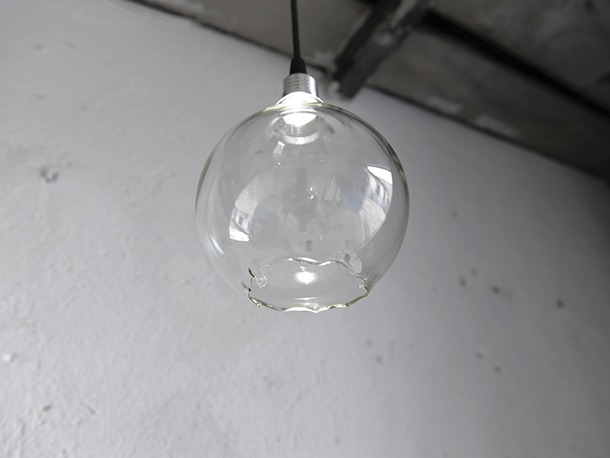
Designed by Sander Mulder, this range of ‘broken’ lightbulbs plays with our preconceptions of traditional light sources. The open-bottomed, empty glass shapes remain functional thanks to an LED lamp in the head of the piece. The bulbs are hand-blown from heat resistant Pyrex glass.
Gem
Gem is a family of angular lights, tables and mirrors which all take inspiration from the facets of cut gemstones. Each product bears indentations of the sand used in its making. Instead of filing these away for a smoother finish the designers at Tom Dixon have embraced the rough and textured feel.



